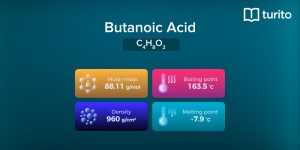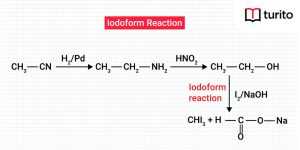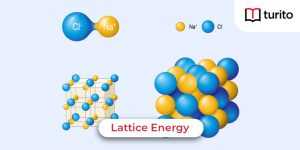Oxygen, when reacting with metals or nonmetals, generally forms oxides. Like other oxides, it is for oxy acids or oxyacids when oxygen reacts with the halogen family. Besides the halogen family, it can form oxyacids with boron, nitrogen, sulphur, and phosphorus. The oxoacids of halogens exist in four forms, i.e., hypohalous acid (HOX), halous acid (HOXO), halic acid (HOXO2), and perhalic acid (HOXO3). In this way, the oxoacid of chlorine, which has a +1 oxidation state, is hypochlorous acid (HOCl). In the ionic form, it exists as a hypochlorite (ClO–) ion. But, do you know that this hypochlorite ion can form different major hypochlorites other than monobasic acid? Let’s look at this article to know more about hypochlorite acid and ions and their uses and properties.
What Is a Hypochlorite Ion?
Hypochlorites are the salts formed from the oxoacids of the halogens. They contain hypochlorite ions, i.e. ClO– ion. When certain cations are attached to these hypochlorite ions, they form different hypochlorite acid salts. The most common and monobasic hypochlorite acid formula is HClO, also known as hypochlorous acid.
Sodium hypochlorite (NaClO), calcium hypochlorite [Ca(ClO)2], and calcium chlorohypochlorite [CaCl(OCl)] or (CaOCl2) are some other important hypochlorites. Calcium chlorohypochlorite is also known as bleaching powder. At the same time, the solution of sodium hypochlorite is also known as a bleaching solution, which is used for bleaching purposes in the textile industry.
History of Hypochlorite
In 1789, hypochlorite was first produced in Javelle, France. It was generated by passing chlorine gas across a sodium carbonate solution. The resulting liquid was a weak sodium hypochlorite solution, known as Javelle water or Eau de Javelle. However, it was not efficient, so chemists sought other manufacturing methods. In the 19th century, E.S. Smith generated a method of producing hypochlorite and patented it. According to his process, brine is hydrolysed to produce chlorine gas and caustic soda. After that, they are mixed to form hypochlorite. Today, an improved version of this method is used, known as the Hooker process. This process is the only large-scale industrial method of sodium hypochlorite production.
Structure and Geometry of Hypochlorite Ion
As the hypochlorite ion has one negative charge, it contains one negatively charged oxygen atom. This O-atom is monovalent and connects with Cl-atom via a single bond, i.e., (Cl-O)– 𝜎-bond. The electron dot structure of this ion shows that it obeys the octet rule, and in it, Cl-atom is linked with O-atom by one 𝜎-bond and has three lone pairs on it. Therefore, as Cl-atom is surrounded by one 𝜎-bond and three lone pairs, this atom is sp3 hybridised. The hybridised orbitals of Cl-atom overlap with the hybridised orbitals of O– ion and form (Cl-O)– 𝜎-bond. Because of the presence of three lone pairs on the Cl-atom, ClO– ion does not have tetrahedral geometry but has a linear shape. Cl-O bond distance in ClO- ion equals 1.69Å, and Cl-O bond energy is 209 kJ/mol.

Manufacturing of Hypochlorites
1. Reaction with alkali or alkaline earth metals hydroxides:
Hypochlorite acid salts are produced when reacting chlorine with alkali or alkaline earth metals hydroxides.
Cl2 + 2NaOH → NaCl + NaClO + H2O
2Cl2 + 2Ca(OH)2 → CaCl2 + Ca(ClO)2 + 2H2O
These reactions are performed near room temperature to suppress the formation of chlorates.
2. By electrochemical process:
In this process, brine is electrolysed to form Cl2, which dissociates in water to form hypochlorite.
2Cl− → Cl2 + 2e−
Cl2 + H2O ⇌ HClO + Cl− + H+
3. Reaction with metal sulphates:
When calcium hypochlorite is reacted with metal sulphates, it produces metal hypochlorites and calcium sulphate. This reaction is performed in water.
Ca(ClO)2 + MSO4 → M(ClO)2 + CaSO4
Properties of Hypochlorite Ion
Based on its characteristics, its properties are categorised as
1. Physical Properties:
- The IUPAC name of the oxoacid ion of chlorine is hypochlorite.
- The hypochlorite acid formula is ClO–.
- The molecular weight of hypochlorite is 51.449 g/mol.
- It is solid and decomposes at 40°C.
- It is soluble in water.
- Hypochlorous acid (HClO) is its conjugate acid.
- It is a chlorine oxide, a chlorine oxoanion, and a monovalent inorganic anion.
- It is toxic by ingested and inhaled
2. Chemical Properties:
- On acidification, hypochlorite gives hypochlorous acid. This reaction exists in equilibrium with chlorine gas.
2H+ + ClO– + Cl– ⇌ Cl2 + H2O
- On heating, hypochlorite breaks into chloride, oxygen, and other chlorates.
2ClO– ➝ 2Cl– + O2
3ClO– ➝ 2Cl– + ClO3–
- It is highly unstable and can only exist in its solution form.
- Calcium hypochlorite has good stability and is produced on an industrial scale.
- Pure magnesium hypochlorite cannot be prepared.
- On heating, LiOCl and Ca(OCl)2 can lead to dangerous thermal runaways and become explosive.
- A dilute solution of sodium hypochlorite is stable and is used as household bleach.
- Anhydrous LiOCl is stable at room temperature, while NaOCl is unstable above 0 °C.
- Hypochlorous acid alone is unstable in isolation because it decomposes to produce chlorine.
- In reaction with ammonia, hypochlorite gives the following products:
NH3 + ClO− → HO− + NH2Cl
NH2Cl + ClO− → HO− + NHCl2
NHCl2 + ClO− → HO− + NCl3
Uses of Hypochlorite
The important hypochlorite acid uses are:
- It oxidises the primary alcohols to carboxylic acids in organic chemistry.
- Hypochlorite is used as a chlorinating agent. It can also chlorinate aromatic hydrocarbons, which are electron-rich.
- It is used in the Jacobsen epoxidation reaction to help convert Mn (III) to Mn (V).
- It is also a strong oxidising agent.
- Sodium hypochlorite (NaOCl) and calcium hypochlorite [Ca(OCl)2] are used to whiten clothes.
- It is used as a stain removal agent.
- Its ion is operated as a water treatment agent.
- NaOCl is a disinfectant and deodorant in dairies, water supplies, and sewage disposal.
- Hypochlorites are used to lighten hair colour.
- HOCl is used for bleaching paper pulp, etc.
- It is used to clean water in houses.
- The key usage of hypochlorite ions is for disinfection and bleaching materials.
- It is one of the chief components of various sanitisers.
- Industrially, it works as bleaching, eliminates bad smells, and does surface purification.
- Hypochlorites are used to convert phenols into chlorophenols.
- Sodium hypochlorite solution is used as a liquid bleach in the textile industry for bleaching paper pulp, linen, cotton, rayon, and jute.
Health Hazards Caused by Hypochlorite
Although there are many hypochlorite acid uses, as it is very reactive and has corrosive properties, it causes many health issues. Some of them are given below:
- Hypochlorite becomes toxic when inhaled and ingested.
- It irritates the eyes, urine secretion membranes, and skin.
- Ingestion of a small amount of household bleach can cause gastrointestinal irritation.
- Ingestion of a high concentration of household bleach can cause severe corrosive injuries to the throat, perforation, mouth, stomach and oesophagus, bleeding, and eventually death.
- In proximity to organic materials, it can burst into flames.
- Contact with a high concentration of hypochlorite solutions can cause inflammation, burning pain, and blisters on your skin.
- Its vigorous and reactive nature may enhance combustion or cause an explosion.
- Long-term exposure to low levels of hypochlorite may cause dermal irritation.
Conclusion
Hypochlorite ion is very sensitive to its surroundings and mostly forms stable compounds in solution form. It exists in its alkali and alkaline earth metal salt forms. Sodium hypochlorite, calcium hypochlorite, calcium chlorohypochlorite, and hypochlorous acid are the generally found forms of hypochlorite acid salts. It is mainly used as a disinfectant for household work and as a bleaching agent for various purposes. It is used in many ways and in different industries. However, it also causes many health hazards like eye irritation, skin burning, blisters, toxicity, and may lead to death. As hypochlorite ion is highly reactive, it is necessary to handle and store it with great care and only in glass, earthenware, or polyvinyl chloride plastic vessels. Also, household products containing calcium or sodium hypochlorite should be stored in safe locations, out of the reach of children.
Frequently Asked Questions
1. Is hypochlorite ion polar or nonpolar?
A. The ClO– ion is a non-polar molecule because it contains two atoms (i.e., chlorine and oxygen) arranged symmetrically. Because of this, dipole moments generated on both sides cancel out each other, making it a nonpolar molecule.
2. Why is it necessary to use glass, PVC plastic or other special vessels to store hypochlorites?
A. Hypochlorites are highly reactive and hence very sensitive to trace metals like nickel, copper, chromium, iron, manganese, and cobalt. Not only toward trace metals, but hypochlorite is also so reactive that it attacks many materials like rubber, certain plastics, and most types of fabrics in a violent manner. Hence, it is stored in a special type of vessel with care.
3. Is hypochlorite ion acid or base?
A. Hypochlorite ion (ClO–) is a base in nature because it accepts one proton (i.e., H+) when dissolved in water. As a result, it forms Hypochlorous acid (HClO). And you know species that accept the proton in an aqueous solution are basic. ClO– + H2O → HClO + OH– Hypochlorous acid (HClO) is a conjugate acid of Hypochlorite ion (ClO–).

Relevant Articles
Butanoic Acid – Structure, Properties, Uses
Butanoic Acid The carboxylic acid, butanoic acid, has the structural …
Butanoic Acid – Structure, Properties, Uses Read More »
Read More >>What is Iodoform? Characteristics and Uses
Iodoform The formula for Iodoform is CHI3. It is biotic …
What is Iodoform? Characteristics and Uses Read More »
Read More >>Lattice Energy – Explanation, Factors & Formulas
Lattice Energy Lattice energy evaluates the intensity of the ionic …
Lattice Energy – Explanation, Factors & Formulas Read More »
Read More >>Lead Acetate – Definition, Properties, Uses
Lead Acetate Have you ever licked lipstick when you sketch …
Lead Acetate – Definition, Properties, Uses Read More »
Read More >>




















Comments: